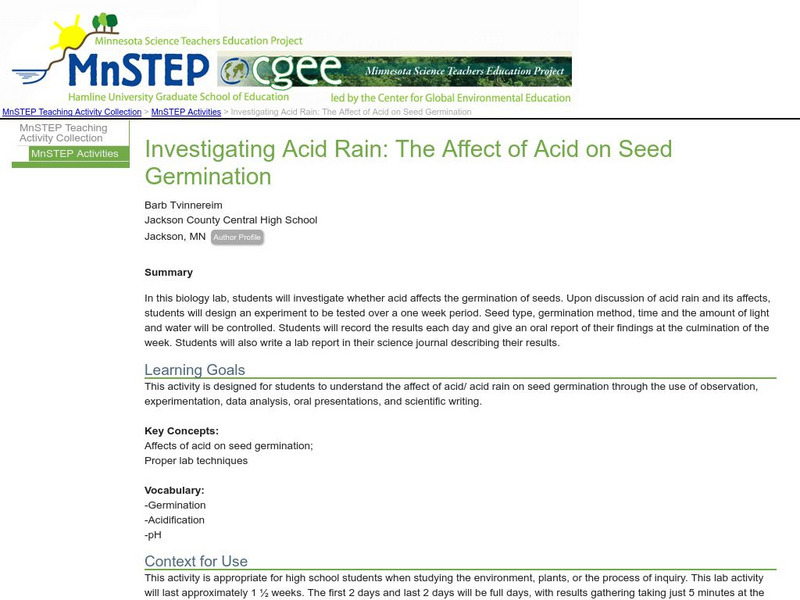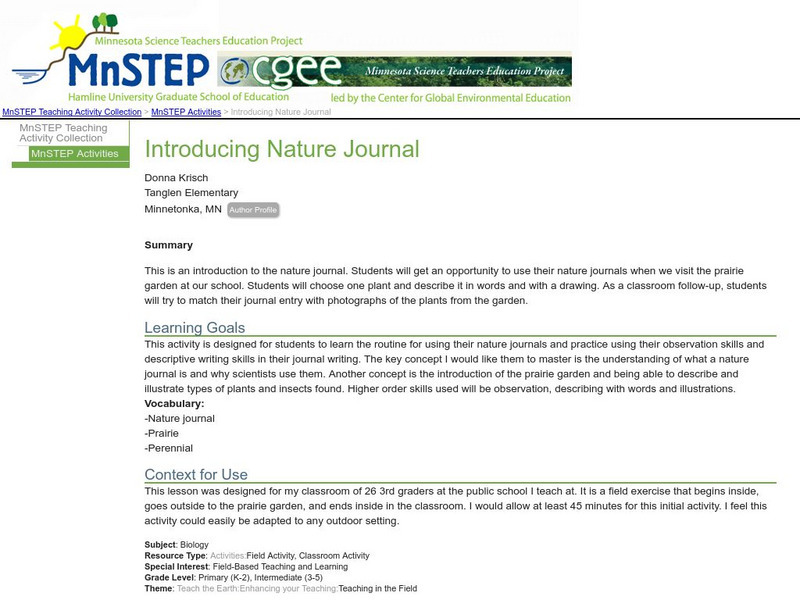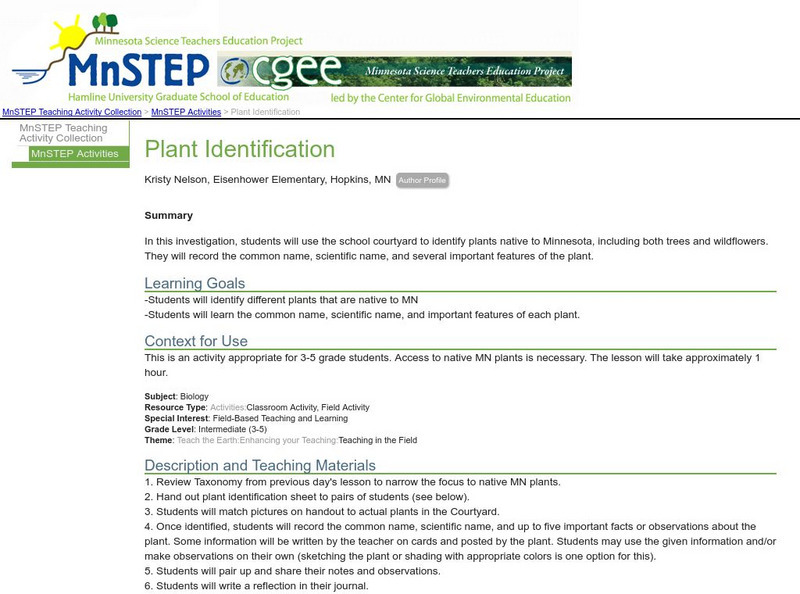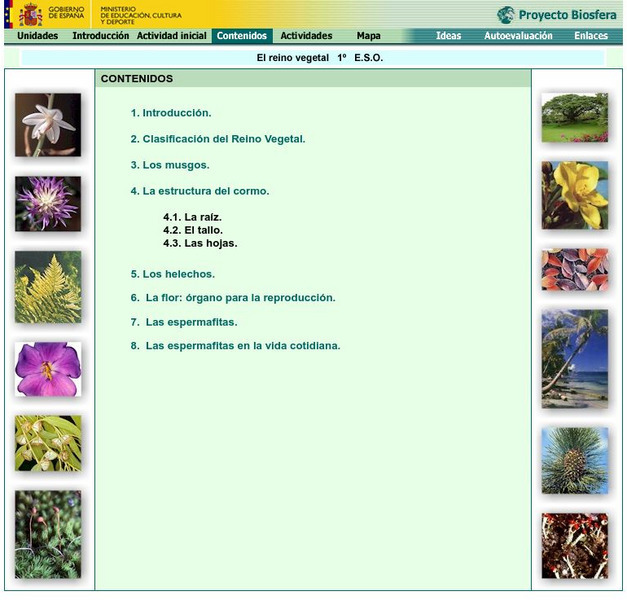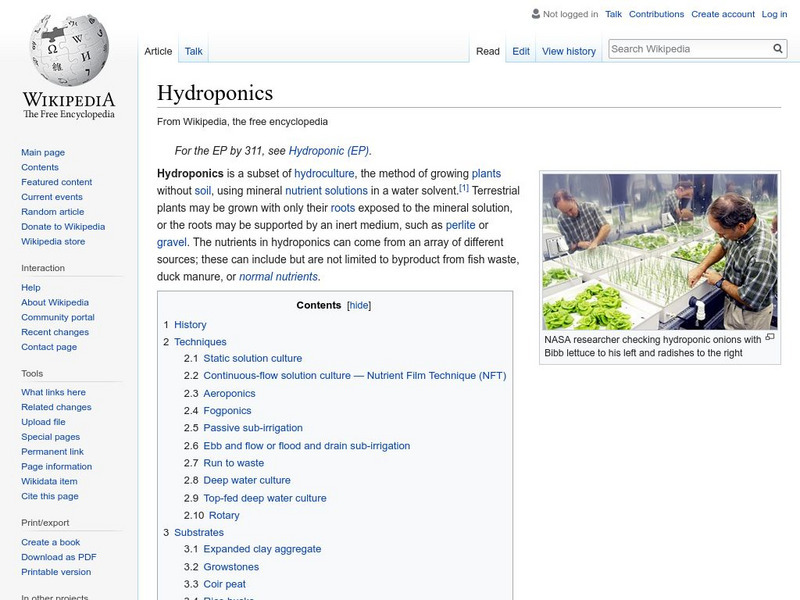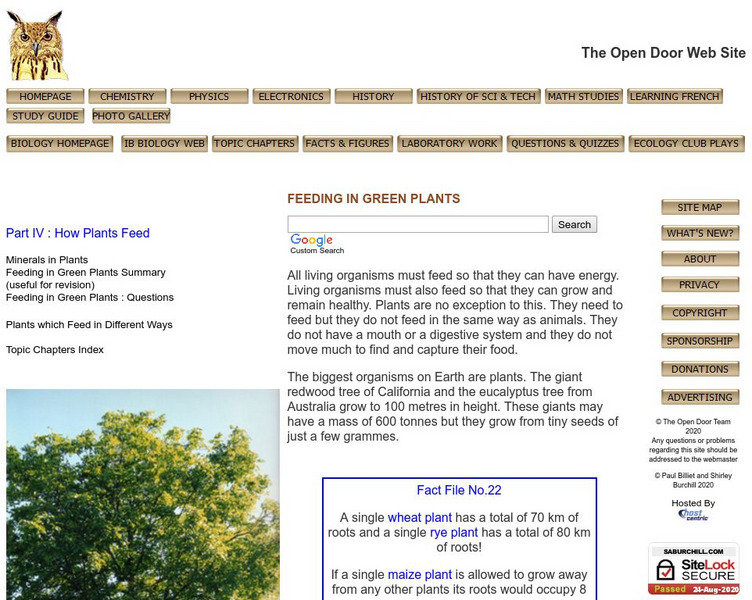Science Education Resource Center at Carleton College
Serc: Investigating Acid Rain: The Affect of Acid on Seed Germination
In this biology lab, students will investigate whether acid/acid rain affects the germination of seeds through the use of observation, experimentation, data analysis, oral presentations, and scientific writing.
Science Education Resource Center at Carleton College
Serc: Introducing Nature Journal
Why do scientists use a nature journal? This activity is designed to introduce students to learning the routine for using a nature journal and practice using their observation skills and descriptive writing skills in their journal...
Science Education Resource Center at Carleton College
Serc: Plant Identification
In this investigation, students will use the school courtyard to identify different plants native to Minnesota, including both trees and wildflowers. They will record the common name, scientific name, and several important features of...
Science Education Resource Center at Carleton College
Serc: Leaf Rubbing and Plant Pressing
Students will study native plants by creating a herbarium used in plant identification. They will also complete some leaf rubbing to put in their journals. This activity is part of a series of labs about plants.
Science Education Resource Center at Carleton College
Serc: Inquiry: How Herbs Change Based on Growing Conditions
In this activity, students will develop writing, math, and inquiry skills by investigating the taste of basil. Students will test basil in different growing conditions while also comparing it to a controlled variable. Students will then...
Royal Botanic Gardens
Plant Cultures: Betelnut
This comprehensive resource delves into betelnut history, spiritual significance, production, trade, and more. Interesting pictures of the plant supplement the text.
Royal Botanic Gardens
Plant Cultures: Garlic
Discover the many uses garlic has in the making of different foods and medicines as you peruse through this informative resource. You will be exposed to a detailed plant profile and history in addition to a number of interesting facts...
Royal Botanic Gardens
Plant Cultures: Henna
This complete resource examines the many uses of henna in medicine, cosmetics, dyes, perfumes and more. Interesting pictures supplement the text explanations.
Science Buddies
Science Buddies: Humic Acid and the Optimum Soil for Plants
Humic acid is touted as an organic soil additive to improve plant growth by multiple means. Does it really work? Here's how you can find out.
Estrella Mountain Community College
Estrella Mountain Community College: Plants and Their Structure Ii
Explore information about the structure of the plant with this page. Investigate the difference between monocots and dicots by comparing both descriptions and pictures. Also understand what produces secondary growth. Finally, look at the...
Missouri Botanical Garden
Missouri Botanical Garden: Biology of Plants: Plant Parts
Learn about the basic parts of a plant and their jobs.
Project Britain
Primary Homework Help: Interactive Plant Quiz
A multiple-choice quiz on plants. Students have the option of checking the questions they answer correctly to keep their score.
Ministerio de Educación (Spain)
Ministerio De Educacion: Las Plantas
These interactive activities provide the minimum information necessary to understand the plant kingdom.
National Institute of Educational Technologies and Teacher Training (Spain)
Ministerio De Educacion: El Reino Vegetal 1 Bachillerato
Plants represent the most important and basic step of any ecosystem. Learn more about this topic in this unit. It includes 15 interactive activiti
National Institute of Educational Technologies and Teacher Training (Spain)
Ministerio De Educacion: El Reino Vegetal
In this lesson you will learn to understand better the different plants in your environment, its characteristics and its presence in our daily lives. Learn how important the plants are for the survival of all ecosystems in the world and...
Wikimedia
Wikipedia: Hydroponics
Have you ever wanted to grow plants without soil? This site will give you seven techniques to do just this. Additionally, learn about the history of hydroponics, problems associated with hydroponics, and possible future uses.
Huntington Library
Huntington Library: Garden Lesson Plans: Smelling Up a Storm [Pdf]
An investigation for younger students into the different scents that come from plants.
Huntington Library
Huntington Library: Garden Lesson Plans: Science Investigation: Vocabulary [Pdf]
A one-page glossary of vocabulary that would be used by middle school students to discuss plants.
Project Britain
Primary Homework Help: Plants Quiz
Brush up on plant facts before taking this interactive quiz.
Open Door Team
Open Door Web Site: Feeding in Green Plants
Learn how plants absorb water through either root systems or vessels in their stems with this site. Also understand how important water is to the make up of the plant!
Polk Brothers Foundation Center for Urban Education at DePaul University
De Paul University: Center for Urban Education: I Like Plants [Pdf]
"I Like Plants" is a one page, realistic fiction, reading passage about a person who loves plants and became a botanist; now she teaches her college students about plants and ecology. It is followed by constructed-response questions...
Polk Brothers Foundation Center for Urban Education at DePaul University
De Paul University: Center for Urban Education: I Like Plants [Pdf]
"I Like Plants" is a one page, realistic fiction, reading passage about a person who loves plants and became a botanist; now she teaches her college students about plants and ecology. It is followed by constructed-response questions...
Primary Resources
Science and Plants for Schools: Living Processes
Great site to help teachers enhance learning about plants and how they grow. There are many downloads including lesson plans, experiments, and activities.
PBS
Pbs Kids: Plum Landing: Plant Inspector
Students will provide a verbal and visual description of plants that are close their homes. The pictures can be published online.
